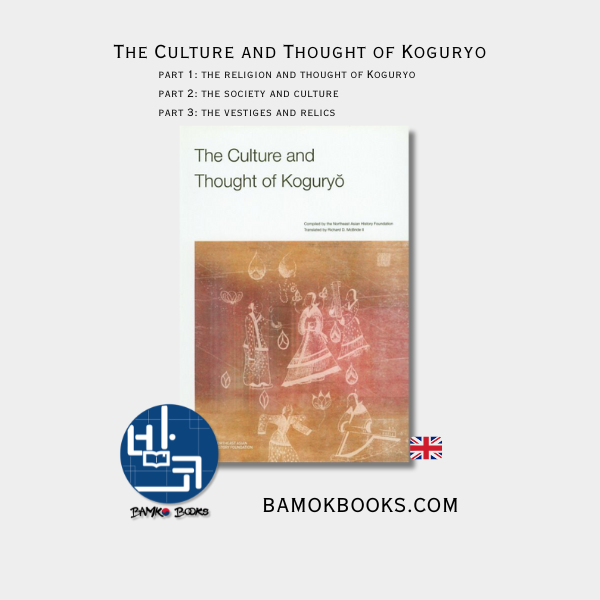<KR>
한국의 역사와 문화 이야기,
역사 선생님들이 전 세계 사람들에게 전하는 이야기
이 책에는 한국인의 이야기가 담겨 있습니다. 그들이 어떻게 통일된 나라를 이루고 자신들만의 문화와 정체성을 확립했는지, 그리고 한국전쟁과 한반도 분단 등 온갖 위기를 겪으며 어떻게 뭉쳤는지 모두 여기에 있습니다. 한국인이 항상 담아온 희망의 메시지는 한국인의 자랑스러운 역사를 다른 사람들에게 더 효과적으로 전달하고, 전 세계 사람들이 한국의 과거를 더 생생하고 열정적으로 이해할 수 있게 해줍니다.
한국 역사와 문화 세계 시민들이 읽어야 할 책
이 책은 창간부터 근대에 이르기까지 한국 역사를 다룬 역사 텍스트입니다. 특히 한국의 전근대 사회를 자세히 다룹니다. 오랜 역사에도 불구하고 한반도 외부에서는 그 사회와 문화 속의 삶에 대해 이야기하는 경우가 드뭅니다. 이 책은 역사적 사건을 연대기적으로 정리하기보다는 한국인이 겪은 다양한 경험이 그들의 삶과 문화에 어떤 영향을 미쳤는지, 그 문화가 한국 역사를 구축하는 데 어떤 영향을 미쳤는지 의문을 제기함으로써 역사적 사건의 세부 사항에 더 초점을 맞추고 있습니다. 이미 한국 역사를 소개한 책이 많지만 이 책을 출간하는 이유도 바로 여기에 있습니다. 독자들은 한국인이 견뎌온 것이 무엇인지, 그리고 그것이 오늘날 세계에서 어떻게 자신의 위치로 이어졌는지 깨달을 수 있었습니다. 또한 그들의 도덕적 가치와 옳고 그름에 대해서도 언급하고 있습니다.
<ENG>
The Story of Korea's History and Culture,
Told by the History Teachers to the People Around the World
Told in this book, is the story of the Korean people. How they formed a unified country and established their own culture and identity, and how they held together through all kinds of crises like the Korean war and the eventual division of the peninsula, they are all here. The message of hope the Korean people have always carried lets us tell the Koreans' proud history more effectively to others, and lets the people around the world understand the past of Korea, more vividly and passionately.
Korean History and Culture World Citizens Should Read
This book is a historical text that covers Korean history from its foundation to the modern era. It especially deals with pre-modern societies of Korea in detail. Despite its long history, life in its society and its culture are rarely spoken of outsides the peninsula. Rather than arranging the historical events chronologically, this book focuses more on the details of the historical events by questioning how the diverse experiences that Koreans had affected their life and culture and what influences that culture had on constructing Korean history. This is the reason why we publish this book, although there are already numerous books that introduced Korean history. Readers could realize what Koreans have endured and how it lead to their position in the world today. It also mentions their moral values and what they believe is right or wrong.
<FR>
L'histoire et la culture de la Corée,
Racontée par les professeurs d'histoire aux gens du monde entier
Dans ce livre, c'est l'histoire du peuple coréen. Comment ils ont formé un pays unifié et établi leur propre culture et identité, et comment ils ont tenu ensemble toutes sortes de crises comme la guerre de Corée et la division éventuelle de la péninsule, ils sont tous là. Le message d'espoir que le peuple coréen a toujours porté nous permet de raconter plus efficacement la fière histoire des Coréens et de faire comprendre aux gens du monde entier le passé de la Corée, avec plus de vivacité et de passion.
Histoire et culture coréennes Les citoyens du monde devraient lire
Ce livre est un texte historique qui couvre l'histoire coréenne depuis sa fondation jusqu'à l'ère moderne. Il traite en particulier en détail des sociétés prémodernes de Corée. Malgré sa longue histoire, la vie dans sa société et sa culture sont rarement évoquées en dehors de la péninsule. Plutôt que d'organiser les événements historiques de façon chronologique, ce livre met davantage l'accent sur les détails des événements historiques en remettant en question les diverses expériences que les Coréens avaient eues sur leur vie et leur culture. C'est la raison pour laquelle nous publions ce livre, bien qu'il y ait déjà de nombreux livres qui ont introduit l'histoire coréenne. Les lecteurs pourraient comprendre ce que les Coréens ont enduré et comment cela mène à leur position dans le monde d'aujourd'hui. Il mentionne également leurs valeurs morales et ce qu'ils croient être bien ou mal.
목차
■ To Korean Readers: How can we talk about Korean history to non-Korean readers?
■ To non-Korean Readers: Who Read This Book : Hoping to get closer to each other through Korean history
■ Prologue - Korean and Koreans, Who are they?
I. The Beginning of the Korean History - B.C. 500000~B.C. 1C
■ Korea in the World, The World in Korea: Prehistoric Culture of the Korean Peninsula, and the Historic Periods
1. Since When Did the Existence of Man Begin on the Korean Peninsula?
2. Koreans Found Gojoseon: the First Kingdom of the Korean Peninsula
3. Developments of Several Ancient Kingdoms, in the South and North of the Korean Peninsula
■ Historical Sites: The Largest Dolmen Kingdom in the World
■ Life and Culture: Ritual Ceremony to God
II. The Beginning of the Three Kingdoms Period - B.C. 1C~A.D. 700
■ Korea in the World, The World in Korea: Formation of the East Asian Culture Block
1. The Foundation fo the Three Kingdoms: Goguryeo, Baekje, and Shilla
2. Competitions Become Intense Among the Three Kingdoms
■ Historical Sites: Ancient Tombs and Murals; Meeting the Goguryeo People 1,600 Years Ago
3. Goguryeo’s Defeat of Successive Invasions of Sui and Tang
4. A Variety of Flourishing Cultures due to the Expansion of Trades
■ Life and Culture: Bab and Gimchi, Stories of the Korean Dining Table
III. Unified Shilla and Balhae in the South and North - 648~926
■ Korea in the World, The World in Korea: People Embarking upon a Journey to the World, and Seokguram
1. Shilla Unites Baekje and Goguryeo
2. The Unified Shilla and Balhae’s Occupying the South and North of the Peninsula
3. The Remarkable Development of a Buddhist Culture
■ Historical Sites: Bulguksa, a Temple in the Land of Buddha
4. The Decline of the South and North Kingdoms Era
■ Life and Culture: Tile-roofed Houses, Straw-roofed Houses, and Ondol and Wooden Floors
IV. Emergence of a United Power Named Goryeo - 900~1135
■ Korea in the World, The World in Korea: The Byeokrannaru Ferry Dock and Gaegyeong, the Imperial Capital of Goryeo
1. Goryeo Unites the Later Three Kingdoms
2. Goryeo Adopts the Civil Service Examination, and Develops a Bureaucratic Ruling System
■ Historical Sites: Blue Celadon and Porcelain Expositions
3. Northeast Asia in Turmoil: Goryeo Employs Practical Diplomacy
■ Life and Culture: Goryeo Believed in Buddha and Respected Confucius
V. A New Historical Perspective Formed Through Struggles Against Foreign Powers - 1135~1380
■ Korea in the World, The World in Korea: Cultural Exchanges Between Goryeo and the Mongol Empire
1.“Liberate the Slaves of Samhan!”
2. Development of a New Historical Perspective
■ Historical Sites: Jikji, and the Museum of Archaic Printing
3. Rise of the Reformers, Dreaming of a New World
■ Life and Culture: The Meaning of Buddhism to Koreans
VI. Rise of a New Dynasty, Joseon: The Beginning of New Traditions - 1380~1474
■ Korea in the World, The World in Korea: Korean’s First Calendar, Chiljeongsan
1. Joseon Designates Hanyang as the Capital for a New Dynasty
■ Historical Sites: The Annals of the Joseon Dynasty
2. Joseon’s Expansion of Its Northern Border to the Amnokgang and the Dumangang
3. The Korean Alphabet Hangeul is Invented
■ Life and Culture: Beautiful and Scientific Letters of Hangeul
VII. The Spread of Confucian Culture - 1474~1650
■ Korea in the World, The World in Korea: Northeast Asia Engulfed in Wars
1. The Sarim Scholars, Dreaming of an Idealistic Governance Based on Neo-Confucianism
■ Historical Sites: Seowon, Where Joseon Scholars’ Life Can be Found
2. Turmoil from the Two Wars
3. Establishment of a Patriarchic Family System
■ Life and Culture: Ancestral Rituals: Commemorating the Deceased Parents
VIII. Various Attempts for Changes - 1650~1862
■ Korea in the World, The World in Korea: Those Who Visited Yeongyeong(Beijing) and Edo(Tokyo)
1. From “Bukbeol” to “Bukhak”; Expanding One’s Perspective in Viewing the World
2. “Let’s Rebuild Joseon!”
■ Historical Sites: The Hwaseong City and the Manseokgeo Reservoir, King Jeongjo’s New City Construction Project
3. The People’s Uprising
■ Life and Culture: Joseon’s Folk Paintings, Strikingly Reflecting the Daily Life
IX. Joseon at a Turning Point - 1863~1896
■ Korea in the World, The World in Korea: Ports of All Three East Asian Countries Opened
1. The Old System at Risk; Joseon Seeks Reforms
■ Historical sites: Ganghwado, the Beginning of the Modern History of Korea
2. Joseon Joins Modernized Countries
3. Radical Reforms Attempted
4. Clashes Between “Revolution from the Bottom” and “Reforms from the Above”
■ Life and Culture: The Joseon’s Image Reflected on the Westerners’ Views, and the Western World in the Eyes of the Joseon People
X. An Unfulfilled Dream of Constructing a People’s Nation; Subsequent Colonization and Oppression by the Japanese - 1897~1921
■ Korea in the World, The World in Korea: Imperialists’ Invasion and the Colonized Joseon
1. Last Reform of the Great Empire of Han (Daehan Empire)
■ Historical Sites: Modern History at the Gyeongungung Palace and the Jeongdong Street
2. Joseon’s Confrontation Against the Japanese Invasion
3. Joseon, a Colony of Japan: Distorted Modern History of Korea
4. March 1st Movement, The Pronouncement of Independence and Democracy
■ Life and Culture: Taegeukgi and the National Anthem: Wishes for Independence
XI. Koreans’ Preparation for Liberation - 1922~1945
■ Korea in the World, The World in Korea: World War II and the Korean Independence Movement
1. Development Without Development: People Are Tired
2. Emergence of Social Movements
3. Emergence of Various Nationalist Movements
4. Founding a Nation While Fighting Against Fascism
■ Historical Sites: Historic Hall of the Seodaemun Prison, and the Independence Memorial Hall of Korea
■ Life and Culture: Migration of Koreans During the Occupation: Koreans Overseas
XII. The Establishment of a Democratic Republic and the Country’s Division - 1945~1960
■ Korea in the World, The World in Korea: Conflicts During the Cold War Period
1. Upon Liberation, the Process for Building a Nation Accelerates
2. Establishment of the Republic of Korea
3. Outbreak of the Korean War
■ Historical sites: DMZ; from the Days of the 38th Parallel to the Restoration of the Gyeongeuiseon Railroad
4. Divided into Two Nations
■ Life and Culture: The Differences and Similarities Between Two Koreas
XIII. Changing Korean Peninsula, Dynamic Korea - 1960~2010
■ Korea in the World, The World in Korea: People’s Power in the 1980s and the June Democracy Movement
1. Industrialization Picks Up Pace in South Korea
■ Historical sites: Metropolitan City: the New Image of Today’s Seoul
2. Accomplishment of Both Industrialization and Democracy
3. North Korea: the Socialist Country Hits a Wall
4. The Korean Peninsula Changing, South and North Getting Closer
■ Life and Culture: One Million Foreigners, Various Nationalities Inside Korea
■Epilogue - A New Hope for the Future
Sources and Copyrights
Index




![문화가 있는 한국어 읽기 1 [초급] Reading Korean with Culture 1 [Beginner] MP3 Download](https://images.squarespace-cdn.com/content/v1/62f643e31145611db3fb960d/1687508199069-WGS6C73641FXULJ6BK7Z/16+-+9788927732488.png)













